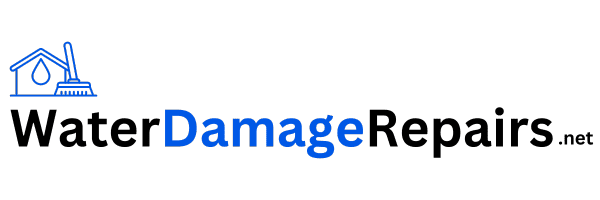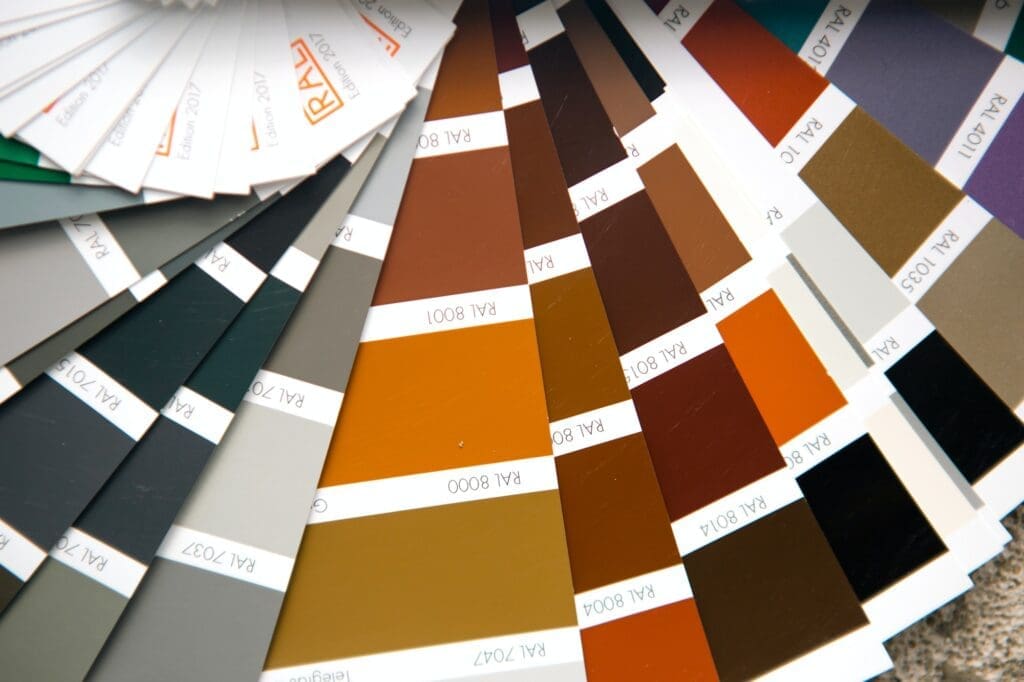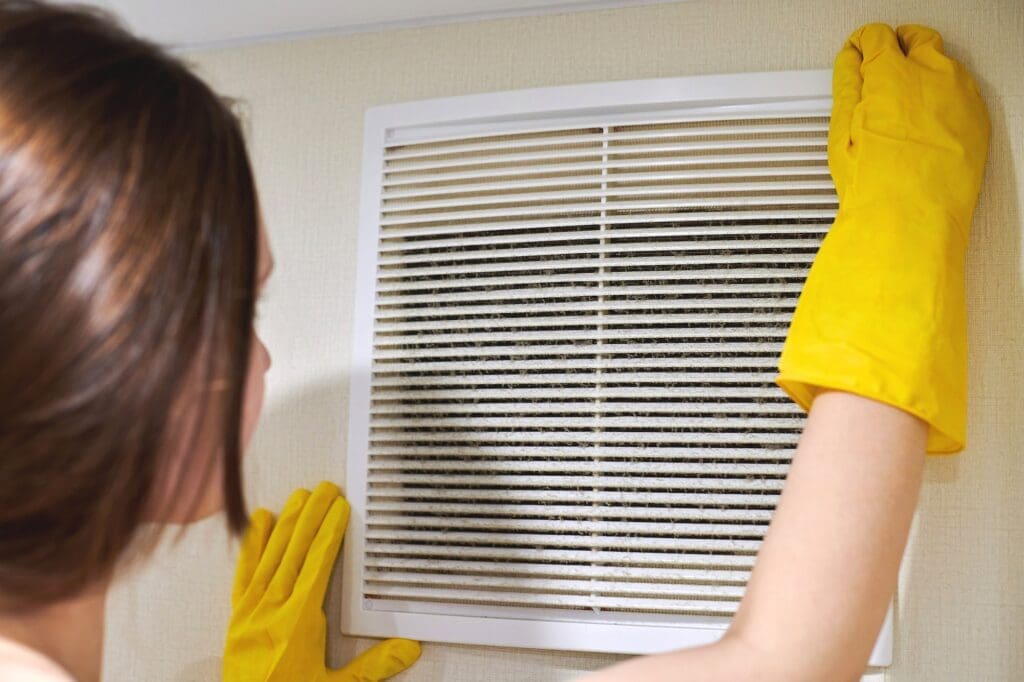Underwater Nightmares: How To Cope With Water Damage In Your Home
There’s nothing like the feeling of walking into your home after a long day, only to find it has turned into an underwater nightmare.
I’ve been there, and trust me, seeing water damage in your beloved sanctuary is enough to make anyone feel frustrated and helpless.
But don’t worry – as someone who’s dealt with this issue before (and helped countless others do the same), I’m here to share my expertise on how you can cope with water damage in your home.
You might be thinking that dealing with such a disaster is overwhelming or even impossible.
However, by breaking down the process step-by-step and being prepared beforehand, you’ll discover that overcoming this challenge allows you not only to restore your living space but also provides an opportunity for growth and newfound knowledge.
It’s always rewarding when we’re able to take these difficult situations and turn them into something positive—not just for ourselves but for those around us who may need our help in the future.
So let’s dive right in!
Identifying The Source Of The Water Damage
Ah, water damage – one of those dreaded homeowner problems we all hope to avoid. It’s a real-life nightmare that can strike at any moment and cause significant distress to both our homes and our wallets.
But don’t worry, I’m here to help you navigate through this watery mess! The first step in tackling the issue is identifying the source of the damage so we can implement effective waterproofing solutions.
Keep an eye out for warning signs such as dampness on walls or floors, musty odors, or mold growth – these are telltale indicators that there might be some hidden water damage lurking beneath the surface. Remember, it’s crucial to act quickly once you’ve spotted something amiss because prolonged exposure to moisture may lead to more severe structural damages down the line; not only will this serve your own interests but also ensure a safe environment for others who live with you.
Next up: assessing the extent of the damage – stay tuned for helpful tips on how best to tackle this vital stage in restoring your home’s integrity!
Assessing The Extent Of The Damage
First off, let’s identify the areas of your home that have been affected by water damage. I’ll need to take a look around to see what surfaces have been affected, and what areas need to be addressed. Secondly, we’ll need to assess the source of the water – was it from a broken pipe or a natural disaster? This will help us determine the best course of action. Lastly, we’ll need to determine the severity of the damage – has the water caused structural damage or is it mainly cosmetic? Knowing the extent of the damage will help us plan the restoration process.
Identifying Affected Areas
I’ve seen it time and time again, folks. Just when you think you’re safe from water damage, another area of your home reveals itself to be affected.
Identifying all the impacted areas is crucial in assessing the extent of the damage, so let me share a few tips with you on how I’d go about this process.
First off, don’t forget that moisture can travel through walls and ceilings; therefore, always check for any discoloration or warping in these places.
Secondly, use waterproofing materials as a preventative measure – they’ll help keep those pesky leaks at bay!
And thirdly, make sure there’s proper condensation control within your home by ensuring adequate ventilation and dehumidifiers are put to good use.
You know what? Helping others overcome their underwater nightmares makes my day just a little brighter!
So remember: stay vigilant and take care of those hidden nooks and crannies where water could wreak havoc undetected.
Assessing Water Source
Now that we’ve talked about identifying the extent of damage, let’s dive into assessing the water source itself.
You see, investigating causes is just as important as determining solutions for your home restoration journey.
After all, knowing where the problem starts can help prevent future issues and keep you from feeling like you’re constantly underwater (pun intended!).
So, my fellow do-gooders, grab those flashlights and start checking out common culprits such as pipes, gutters, and appliances.
And while you’re at it, don’t forget to consider external factors like heavy rainfall or poor drainage systems.
Remember: no stone should be left unturned in our quest to serve others by keeping their homes dry and damage-free!
Determining Severity Of Damage
Now that we’ve covered assessing the water source, let’s shift gears and focus on determining the severity of damage.
As a home restoration expert, I can’t stress enough the importance of this step in your mission to serve others by restoring their homes.
Monitoring humidity levels within the affected area is crucial as it gives you an idea of how bad things have gotten (and believe me, they can get pretty bad!).
Additionally, inspecting pipes for leaks or breaks helps identify potential problem areas – after all, knowledge is power!
So don your detective hat and dive into uncovering the extent of damage with zeal; remember that every bit of information brings us closer to providing relief to those who need it most.
Removing Standing Water
Now that you’ve assessed the extent of the damage, it’s time to dive into action like a superhero saving an underwater city.
The first step in your water-damage rescue mission is removing any standing water from your home. This process not only helps prevent further damage but also creates a safe environment for you and your family.
When tackling standing water, consider using equipment such as wet vacuums or sump pumps to remove excess water quickly and efficiently. It’s important to act fast to minimize potential health hazards and structural issues caused by prolonged exposure to moisture.
As you work towards preventing future water intrusion, explore waterproofing solutions appropriate for your specific situation – this could include sealing cracks, installing vapor barriers, or updating drainage systems around your property.
Remember that every heroic deed starts with small steps – be proactive in addressing these concerns now so they won’t become larger problems down the road!
Next up on our restoration adventure: drying out the affected area and making sure everything is good as new again.
Drying Out The Affected Area
Drying out the affected area is a crucial step in dealing with water damage, and I’m here to guide you through it. You might be feeling overwhelmed right now, but trust me – together, we’ll get through this! We need to act fast to prevent further damage and mold growth, so let’s roll up our sleeves and dive into some effective drying techniques that will help restore your home back to its former glory.
To effectively dry out the flooded space:
- Use fans or air movers: These handy devices work wonders for speeding up evaporation by circulating airflow throughout the room.
- Employ dehumidifiers: Running these machines helps reduce humidity levels, making it harder for mold spores to thrive while aiding moisture prevention.
- Open windows and doors: This allows fresh air to enter your home, supporting faster drying times.
Remember that every little bit counts when it comes to tackling water damage. With patience and persistence, we can make significant headway in getting your home dried out quickly.
Now that we’ve got a solid plan for drying out your home, let’s move on to discussing disinfection and sanitization of the affected areas.
Disinfection And Sanitization
Now that your home is dry, you may be wondering what’s next. Don’t worry; I’ve got your back! The next crucial step in restoring your home to its former glory is disinfection and sanitization. This will ensure all the nasty germs, bacteria, and other harmful substances lurking around after water damage are eliminated.
Before we dive into this vital process, let me share with you some essential tools you’ll need for effective disinfection and sanitization:
| Equipment | Purpose |
|---|---|
| Disinfectant spray | To kill mold spores and bacteria |
| Bleach | For powerful cleaning of stubborn stains |
| Waterproofing agent | To prevent future water infiltration |
With these handy items at your disposal, it’s time to begin the sanitization process. Start by applying a generous amount of disinfectant spray throughout the affected area. Be sure to get every nook and cranny! Next, use bleach on any visible mold or mildew spots – but remember always to wear gloves when handling bleach. Once everything is squeaky clean, consider waterproofing surfaces as an extra layer of protection against possible future mishaps.
It’s also essential to dehumidify your space during this phase. Maintaining low humidity levels helps keep mold growth at bay while providing better air quality for those who serve others tirelessly (like yourself!). So go ahead: grab that dehumidifier from storage or invest in one if you haven’t yet—it’s worth it!
Now that our spaces are sanitized and disinfected, there’s just one final challenge before we can declare victory over those underwater nightmares… testing for mold! Let’s move forward and tackle this last hurdle together!
Testing For Mold
Now that we’ve covered the basics of coping with water damage, let’s dive into one of the most important aspects: testing for mold.
As a home restoration expert, I can’t emphasize enough how crucial it is to address mold issues as soon as possible. Not only can mold lead to health problems for you and your loved ones, but it can also cause significant structural damage if left untreated.
Inspecting pipes and checking humidity levels regularly are key preventive measures to ensure your home stays safe and mold-free.
To test for mold, start by conducting a thorough visual inspection of your entire home, paying close attention to areas where moisture accumulates or has accumulated in the past. Don’t forget those hidden spaces like crawlspaces, attics, and behind appliances! You might also consider investing in a hygrometer – this nifty device will help monitor humidity levels in your home so you’ll know when action needs to be taken.
Remember, serving others starts with taking good care of our own homes and ensuring they’re healthy environments for ourselves and our families.
Now that you have all the information needed on detecting mold presence, let’s move onto addressing another critical aspect – repairing structural damage caused by water intrusion.
Repairing Structural Damage
They say that Rome wasn’t built in a day, and the same goes for repairing structural damage caused by water. It may take time, patience, and some elbow grease to get your home back to its former glory, but with the right mindset and approach, you can turn this setback into an opportunity to make your living space even better than before.
As a home restoration expert, I’ve seen countless homeowners not only recover from water-related disasters but also come out stronger on the other side.
To start off on the right foot, monitoring humidity levels is crucial in preventing mold growth and further deterioration of materials after initial cleanup efforts. Invest in a reliable hygrometer or dehumidifier to keep moisture levels under control as you work through repairs.
Next up is evaluating insulation – damaged insulation can lead to decreased energy efficiency and comfort inside your home. Look closely at wall cavities and crawlspaces for any signs of wet or matted insulation material; if found, remove it promptly and replace it with new insulation once everything has dried thoroughly.
Remember: taking care of these smaller details now will help save you headaches (and money) down the road! With each step completed, you’re getting closer to restoring your home’s integrity while serving those who call it their safe haven – yourself included.
Now let’s dive into replacing waterlogged items without missing a beat!
Replacing Waterlogged Items
Now that you’ve tackled repairing the structural damage, it’s time to dive into dealing with those waterlogged items.
Replacing belongings can be a heart-wrenching process as some items hold sentimental value or are simply expensive to replace.
The key here is not to lose hope but rather focus on preventing rust and effectively evaluating costs.
Begin by sorting through your possessions and determining which ones can be salvaged with proper care and cleaning.
For example, metal objects may need immediate attention to prevent rust from setting in permanently.
Furniture made of solid wood might be restored if properly dried out and treated for any potential mold growth.
On the other hand, porous materials like upholstered furniture or mattresses might be beyond saving due to health risks associated with mold exposure.
Evaluate the cost of restoring each item versus purchasing new replacements – sometimes, it’s more practical (and safer) to let go of certain things for the sake of your family’s well-being.
With all these decisions made, you’re now ready to seek professional assistance in putting your home back together again.
Seeking Professional Assistance
You might think you’re living in a scene straight out of Titanic, with water gushing everywhere and furniture floating around. But fear not, my friend! This is where seeking professional assistance comes to your rescue like a superhero swooping in to save the day. Water damage can be overwhelming, especially when it catches us off guard, but rest assured that help is just a call away.
Let me share some crucial steps to take when faced with this underwater nightmare:
- Call for expert help: Don’t try to tackle the problem single-handedly; seek help from professionals who have experience dealing with water damage.
- Get insurance coverage sorted: Contact your insurance agent as soon as possible and discuss your options regarding coverage for the damages caused by water intrusion.
- Document everything: Take photos and videos of all damaged areas and belongings – these will come handy while filing claims or discussing repairs with experts.
- Keep receipts: Make sure to keep track of any expenses incurred during the restoration process – again, useful for insurance purposes.
As we move past those initial shockwaves of chaos brought on by unexpected water damage occurrences, remember that you don’t have to face this disaster alone. By following these steps and seeking help from experienced professionals, you’ll find solace in knowing that there’s hope for restoring your home back to its pre-flood glory.
With an optimistic mindset focused on serving others impacted by similar circumstances, know that together we can overcome our shared struggles against dampened surroundings! Now let’s dive into ways of preventing future damage so you can swim confidently through life without fearing another aquatic calamity lurking around every corner.
Preventing Future Damage
Now that you’ve called in the professionals and have your home on the mend, it’s time to think about how you can prevent future water damage. After all, nobody wants to go through this nightmare again! Taking preventative measures is essential for keeping your home safe from potential threats.
In this section, we’ll dive into some effective weatherproofing and floodproofing techniques that will help protect your sacred space.
The first step in preventing future water damage is ensuring proper weatherproofing of your home. This includes sealing any cracks or gaps around windows and doors with caulk or weatherstripping, as well as inspecting and maintaining your roof regularly to avoid leaks. Additionally, invest in gutter guards to keep debris out of your gutters so they can effectively divert rainwater away from your home.
For added protection against floods, consider installing a sump pump system in your basement or crawl space – these systems are designed to remove excess water before it causes damage. Don’t forget about landscaping too; make sure the ground slopes away from your house instead of towards it to reduce the risk of flooding during heavy rains.
As much as we hope our homes remain dry sanctuaries forevermore, life offers no guarantees. But by taking proactive steps like those mentioned above – from weatherproofing to flood-proof installations – we put ourselves one step closer to minimizing risks and creating peace-of-mind knowing we’re doing everything possible to serve our loved ones by protecting their beautiful haven called ‘home.’
Frequently Asked Questions
How Can I Determine The Cause Of The Water Damage If It’s Not Immediately Apparent?
I know what you’re thinking – finding the cause of water damage can be like searching for a needle in a haystack, especially when it’s not immediately apparent. But fear not! As a home restoration expert, I’ve got some great tips to help you pinpoint that pesky leak and put your mind at ease.
One effective method is using moisture detection tools, which can identify areas with high levels of dampness by scanning surfaces within your home.
Another useful approach would be humidity tracking devices; these gadgets monitor indoor air conditions and alert you if there are any unusual spikes in moisture levels.
By employing these techniques, we can work together to locate the root of the problem, allowing us to address it efficiently and effectively while also ensuring we continue serving our communities as responsible homeowners who care about keeping their homes safe and dry for everyone inside.
What Are Some Long-Term Health Risks Associated With Water Damage In The Home?
You might not realize it, but long-term health risks associated with water damage in your home can be pretty serious.
Mold prevention and water prevention are key to maintaining a healthy living environment for you and your loved ones.
As a home restoration expert, I’ve seen the effects of mold exposure firsthand: respiratory issues, allergies, headaches, and even more severe problems like asthma or immune system disorders.
It’s essential to address any signs of water damage immediately so that you’re able to prevent these health hazards from taking root.
By being proactive about maintenance and repair, you’ll not only protect your family’s wellbeing but also contribute positively to the overall community by promoting safer living conditions for everyone around you.
Are There Any Diy Solutions For Minor Water Damage That Don’t Require Professional Assistance?
When life gives you lemons in the form of minor water damage, don’t fret – there are some DIY solutions that can help turn those lemons into lemonade.
As a home restoration expert, I’d like to share some drying tips and mold prevention techniques for those times when professional assistance isn’t necessary.
First off, it’s important to act quickly by removing excess water using towels or mops and opening windows to improve air circulation.
Next, you’ll want to set up fans and dehumidifiers to expedite the drying process and keep humidity levels low. Don’t forget to move wet items out of your living space temporarily while they dry!
Lastly, be proactive with mold prevention by cleaning affected areas with a mix of water and mild detergent – just remember always to wear gloves during this step!
By following these simple steps, not only will you restore harmony within your home but also serve as an inspiration for others facing similar challenges.
How Can I Protect My Valuable Items, Such As Electronics And Important Documents, From Potential Water Damage?
When it comes to safeguarding our precious belongings, such as electronics and important documents, from potential water damage, taking preventative measures is key.
As a home restoration expert, I can’t stress enough the importance of investing in waterproofing solutions for your valuable items.
Consider using watertight containers or bags specifically designed to protect your possessions in case of floods or leaks.
It’s also wise to store crucial documents and electronic devices on higher shelves or even in an elevated area of your home, away from any possible water intrusion points.
By being proactive with these simple steps, not only are you protecting what matters most but also serving others by setting a positive example of preparedness and responsibility when facing unexpected disasters.
What Are The Potential Impacts On My Home’s Value And Insurance Coverage After Experiencing Water Damage?
Experiencing water damage in your home can be a real nightmare, but it’s important to consider the potential impacts on your home’s value and insurance coverage.
As a home restoration expert, I’d recommend taking safety precautions to minimize financial implications.
It’s vital to address any water damage issues promptly as they could lead to structural problems or mold growth that may negatively affect your property’s value.
Additionally, make sure you understand what is covered under your insurance policy – some policies may not cover certain types of water damage or have limitations on payouts.
By being proactive and addressing water-related concerns early on, you’ll be better equipped to protect both your home’s value and ensure adequate insurance coverage while also serving others by setting an example for maintaining a safe and healthy living environment.
Conclusion
In conclusion, dealing with water damage in your home can feel like an overwhelming tide sweeping through your life.
I remember a client of mine who discovered extensive mold growth due to unchecked water damage and had to deal with the physical toll it took on their health as well as the emotional stress of repairing their beloved home.
It’s crucial to identify the cause promptly, address any potential health risks, and seek professional assistance when necessary.
While DIY solutions might help you navigate minor leaks or small spills, always keep in mind that the key is prevention – consider investing in protective measures for your valuable items, such as waterproof containers for important documents and surge protectors for electronics.
Remember that protecting these items not only safeguards your precious memories but also helps maintain your home’s value and insurance coverage eligibility.
As a home restoration expert, I’ve seen firsthand how devastating water damage can be for homeowners.
By staying vigilant about potential causes, addressing issues quickly, and taking steps to protect what matters most to you, you’ll be better equipped to weather any storm that comes your way – both literally and metaphorically!



